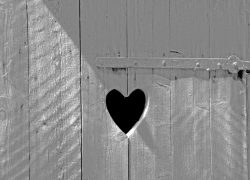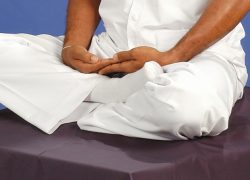What is Mindfulness?
What is all this talk of Mindfulness? What is Mindfulness Meditation? How is it useful?
The word “mindful” is used in our everyday lives to mean “aware” or “conscious”. We say we are being mindful when we choose to do something in a way that is thought out and deliberate, fully conscious of what is going on while we are doing it.
In the context of this article, I am discussing Mindfulness, with a capital M, as a contemplative practice. This word was chosen for the translation of “Sati” from Pali, which describes a practice that we sometimes call Mindfulness Meditation in the Western world. We have extracted this practice from ancient wisdom and contemplative practices due to its proven effectiveness in helping people reduce stress, improve their immune systems, free themselves from unnecessary suffering and understand their true essence and purpose in life, creating an overall increase in health and wellness.
In general, mindfulness is the practice, or a state of purposeful awareness on our everyday activities and in our lives in general. It is a conscious observation of a situation, of our thoughts, our body and our emotions in the present moment. It is being in the here and now, fully aware of what is happening inside yourself and outside yourself.
The easiest way to begin to understand mindfulness is through analogy. Imagine you are driving your car in the morning and that particular day you aren’t going to work, because you have a doctor’s appointment. At some point in your commute, you start to realize that you are on autopilot, and you have steered your car towards work, not towards the doctor’s office. You were planning dinner in your mind and lost track of where you were going. Mindfulness practice would be the moment when you realize that you have gone in the wrong direction and that you are thinking about dinner.
Now, this is an easy example. No big deal. Once you become aware, you just turn your car around and head in the right direction. But when mindfulness gets interesting is when we start to apply it to more important life situations, because our automatic reactions go far beyond our daily commute. In fact, some of us are so trained and chained by our past experiences or by our fears of the future, that we are unable to see the present moment for what it truly is. Instead, we apply a rule we learned at some point in the past, or a fear we have, and then react accordingly. This can happen with a boss at work, before playing an important game or sport, at school, at home with family members or even when we are by ourselves.
Our reactions form part of the roles that we have learned to play, based on our desire to find pleasure or evade something we fear will make us suffer. This manifests in actions so basic as giving the finger to someone whose driving didn’t please you, to those more complex such as playing roles like the martyr, the victim, the schmoozer, the know-it-all, etc. — in order to get something, avoid something or to perpetuate the story your ego needs to continue upholding. It can also manifest as emotional or physical responses to imagined situations we create in our minds, yet are not really happening, for example, when we mistakenly think we are ill and become anxious and even show symptoms. As Thich Nhat Hanh said, “You can’t drown in a picture of the ocean. Our suffering is based on images and not on reality.”
Mindfulness cracks this code. The practice of mindfulness pulls us out of this mindset and shows us a new world of possibilities. It teaches us that we have choices and can respond to what we encounter in our daily lives, instead of reacting on autopilot.
This is just the tip of the iceberg. As you go deeper and deeper into your mindful practice, more beauty, meaning, authenticity, joy and equanimity unfold. I am still learning every day, and I am continuously pleasantly surprised by how this practice has brought new dimensions into my life.
What exactly does this entail?
There are two main practices in mindfulness. They are often referred to as formal and informal practice. Formal practice is Meditation (this includes sitting, walking meditation or lying down). You don’t need to be a yogi or a mystic or a Buddha to meditate. There are simple instructions and very enjoyable meditations to listen to here. The informal practice can be done anytime throughout your day. It is easy to employ for this reason. You don’t need to set time aside to do it. It involves focusing your awareness on different activities throughout your day, starting with basic things like eating or brushing your teeth. It is relatively easy to start, yet perhaps the most difficult is forming the habit of “turning on” the observer we all have inside us. Want to get started now? Go to Daily Mindful Practice for clear and detailed instructions!
Before I go, I just want to say a few words about what Meditation IS NOT:
Meditation IS NOT daydreaming.
Meditation IS NOT just relaxing or doing nothing.
Meditation IS NOT forcing yourself to concentrate on something. There is no forcing involved.
Meditation IS NOT yoga, necessarily, however they are siblings.
Meditation IS NOT a religion, nor is there any worship involved. The practice of Mindfulness Meditation is compatible with any faith or creed.
Meditation IS NOT an escape from reality. It is rather a way to see reality more clearly.
Meditation IS NOT trying to leave your mind blank or “not thinking”. It is true that there is an element of greater and greater space between thoughts that slowly occurs over time, as you practice, but it is more of a “dust settling” than a “pushing out” of thoughts.
Meditation IS:
the best thing you will ever do towards your own well-being. See why in Benefits of Mindfulness.
From the Blog
Warning: Undefined array key "post_gutter" in /home4/victosn1/public_html/mindgazing/wp-content/themes/themify-peak/theme-functions.php on line 684

What They Don’t Tell You About Self-Love
What They Don’t Tell You About Self Love For years I had heard this statement, “You have to love yourself first.” Year after year, hearing the same sentence, and knowing that somehow that must be true, only to be stuck with a growing frustration about what this meant and how to do it. You see, […]

You Are The Sky
You Are The Sky How mindfulness and meditation can help you find balance and authenticity. Anyone who has flown above the clouds knows that the sun is always shining up there, the sky is clear and warm, no matter what is going on below. With the stress of daily life, our thoughts become the clouds that […]

Meditation Posture and Positions
So, what about posture? Posture is important when meditating. We are aiming for a dignified and upright, yet comfortable position. Sit with your back in an upright position, not too rigid but not too lax. You should feel comfortable, yet sense that your spinal column is straight. After you sit, it helps to reach under […]
“The practice of mindfulness begins in the small, remote cave of your unconscious mind and blossoms with the sunlight of your conscious life, reaching far beyond the people and places you can see.”
~Earon Davis